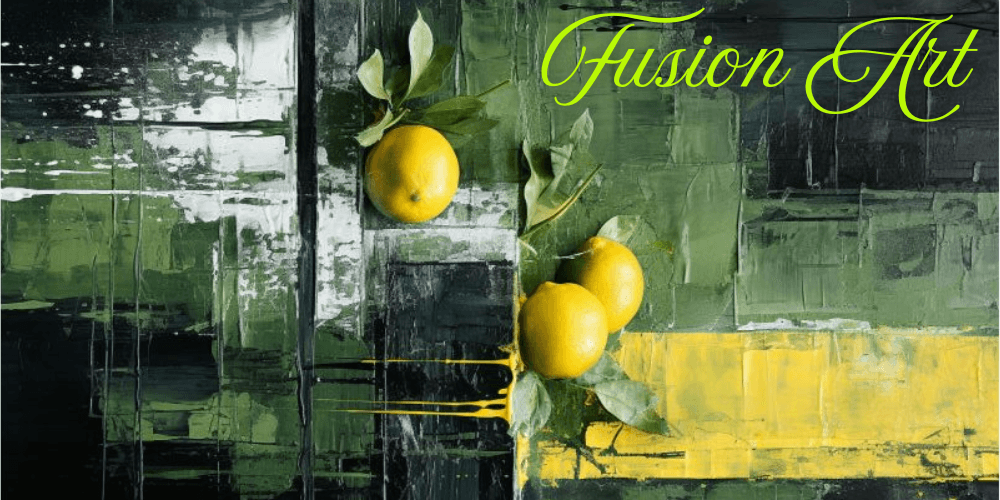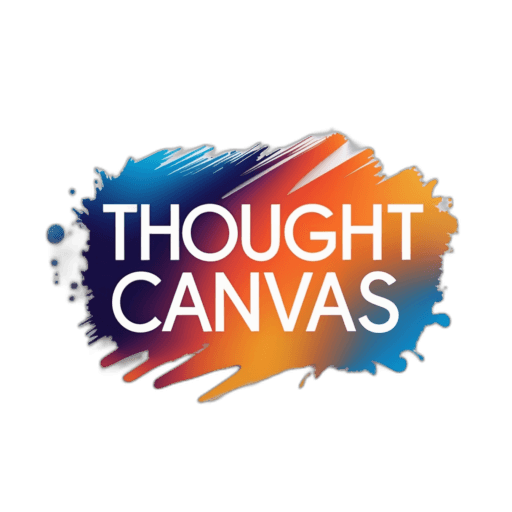Fusion art is a vibrant and dynamic genre with an exciting crossover of artistic styles, mediums, and cultures. It’s a place where lines are blurred, traditions are crossed, and artists take risks to show us something completely new. Beyond a mere amalgamation, fusion art aspires to go beyond the sum of its elements, forging distinctive expressions that resonate with a global audience. In this fusion art blog, we will delve into the many facets of fusion art, including its history, characteristics, notable artists, and the continuing discussion around its definition and significance in the contemporary art world.
Defining the Elusive: What Exactly is Fusion Art?
Pinpointing a single, universally accepted definition of fusion art proves challenging, just like trying to capture smoke in a jar. Its very nature defies rigid categorization. However, at its core, fusion art involves the deliberate merging of diverse artistic styles, mediums, or cultural elements. It can manifest in numerous ways:
- Style Fusion: Combining elements from different artistic movements, such as Impressionism, Cubism, Surrealism and Pop Art. Imagine a painting rendered in the vibrant colours of Fauvism but with the fragmented perspective characteristic of Cubism. This interplay creates a visually stimulating and intellectually engaging experience.
- Medium Fusion: Medium fusion means blending different artistic mediums, like sculpture and painting, digital art and traditional photography. Think of a sculpture incorporating projected light patterns that interact with its form or a photograph manipulated digitally to create a painterly effect. This cross-pollination of mediums opens up new avenues for artistic expression.
- Cultural Fusion: Integrating artistic traditions from different cultures, such as incorporating Japanese calligraphy into a Western-style painting or blending African rhythms into electronic music. This cross-cultural dialogue fosters understanding and appreciation for diverse artistic heritages.
- Conceptual Fusion: Merging seemingly disparate concepts or ideas into a single artwork. It could involve exploring themes of science and spirituality or juxtaposing the ancient with the contemporary. This approach allows artists to explore complex issues and challenge conventional thinking.
It\’s crucial to distinguish fusion art from mere imitation or pastiche. Fusion art is not simply copying elements from different sources; it’s about synthesizing them into a cohesive and original whole. The artist’s intent is paramount – to create something genuinely new, not just a superficial amalgamation of existing styles.
A Brief History: Tracing the Roots of Fusion
While the term \”fusion art\” may be relatively recent, the practice of blending artistic influences has a long and rich history. Throughout the ages, artists have been drawing inspiration from different cultures and styles, leading to the development of hybrid art forms. Consider the influence of Eastern art on Western Impressionism or the blending of indigenous artistic traditions with European styles during the colonial era.
The rise of globalization in the 20th and 21st centuries has further accelerated the fusion of artistic styles. Increased travel, communication, and access to information have exposed artists to a wider range of artistic traditions than ever before. It has led to a flourishing of fusion art, as artists embrace the opportunity to explore and experiment with different cultural and stylistic influences.
Characteristics of Fusion Art: A Kaleidoscope of Expression
Fusion art is characterized by its inherent diversity and unpredictability. However, some common threads often run through these works:
- Eclecticism: Fusion art embraces a wide range of influences, drawing inspiration from diverse sources. This eclecticism is reflected in the variety of styles, mediums, and themes that are incorporated into fusion artworks.
- Hybridity: Fusion art is inherently hybrid, blending different elements to create something new. This hybridity can be seen in the fusion of styles, mediums, or cultural influences.
- Innovation: Fusion art is often driven by a desire to invent something new and push the boundaries of artistic expression. Artists in this genre constantly explore and embrace new ways to combine different elements and create unique and original works.
- Global Perspective: Fusion art often reflects a global perspective, drawing inspiration from different cultures and artistic traditions around the world. This global outlook is a hallmark of contemporary art, reflecting the interconnectedness of our world.
- Accessibility: While some fusion art can be conceptually complex, much of it possesses an immediate visual appeal. The blending of familiar elements can create a sense of accessibility, making the art more engaging for a wider audience.
Prominent Artists and Examples
While it\’s challenging to categorize artists strictly as “fusion artists,” many contemporary creators utilize fusion principles in their work. Consider:
- Visual Arts: Artists like Bharti Kher, who blends Indian traditions with contemporary art practices, or Cai Guo-Qiang, known for his explosive gunpowder drawings that fuse Eastern philosophy with Western artistic techniques, exemplify fusion in the visual arts.
- Music: The world of music is rife with fusion examples. Think of blending jazz and Latin rhythms or combining classical and electronic dance music. Artists like Yo-Yo Ma, who explores the intersection of classical music with diverse cultural traditions, embody this fusion.
- Dance: Contemporary dance forms often incorporate elements from different dance traditions, such as ballet, modern dance, and hip-hop, creating a dynamic fusion of movement and expression.
- Culinary Arts: While not traditionally considered “art,” the culinary world also embraces fusion. Chefs constantly experiment with the fusion of different cuisines, creating innovative and exciting culinary experiences.
The Ongoing Debate: Challenges and Criticisms
While fusion art is rising in popularity, it does not go without its critics. However, this can often result in an unpolished fusion, with few distinguishing elements, and more often, marking its absence. Others worry about cultural appropriation, especially when artists appropriate what they do not know or give credit for borrowing from marginalized cultures.
Another consideration is drawing the line between fusion and pastiche. In the fusion space, some latecomers raised an eyebrow and said such and such is just derivative and not well done, an overintellectualized misdirection of a culture where true fusion art is fundamentally something else altogether.
In addition, the commercialization of fusion art is often forced, leading to a blending of styles as artists try to meet the demands of the market rather than their creative personality. It can lead to a weakening of artistic expression and a lack of cultural specificity.
The Future of Fusion: A Constantly Evolving Landscape
Despite these challenges, fusion art continues to thrive and evolve. As our world becomes increasingly interconnected, artists will continue to explore new ways to blend different styles, mediums, and cultural influences. Artists are embracing these new technologies to create hybrid works that reflect the fluidity of people, places and cultural exchange in the 21st century.
Fusion art promises much for the future with respect to potential discoveries, innovations, and many more. Hence, as more and more artists continue to explore and experiment with different forms of art, fusion art is bound to be a dominant and critical force in shaping the trajectory of the 21st century and beyond.
Conclusion
Fusion art represents a powerful force in the contemporary art world. It’s a testament to the human capacity for creativity and innovation, reflecting our increasingly interconnected and globalized world. While challenges and criticisms exist, fusion art’s dynamic and ever-evolving nature ensures its continued relevance and importance. By embracing diversity, challenging conventions, and pushing the boundaries of artistic expression, fusion art enriches our understanding of art and culture, offering a vibrant tapestry of styles, ideas, and perspectives.
Disclaimer
This blog introduces you to the concept of fusion art in general. The views stated here are based on the author’s research and interpretation of the subject. Art is so subjective—it means different things to different people, and fusion art as a genre has varying definitions, qualities, and merits according to different people. This blog is designed for educational purposes only and should not be regarded as a definitive or exhaustive topic analysis. The author urges readers to conduct their own research and explore the diverse world of fusion art to form their own informed opinions. No claims are made regarding the originality or comprehensiveness of the information presented, and the author disclaims any liability for errors or omissions.


